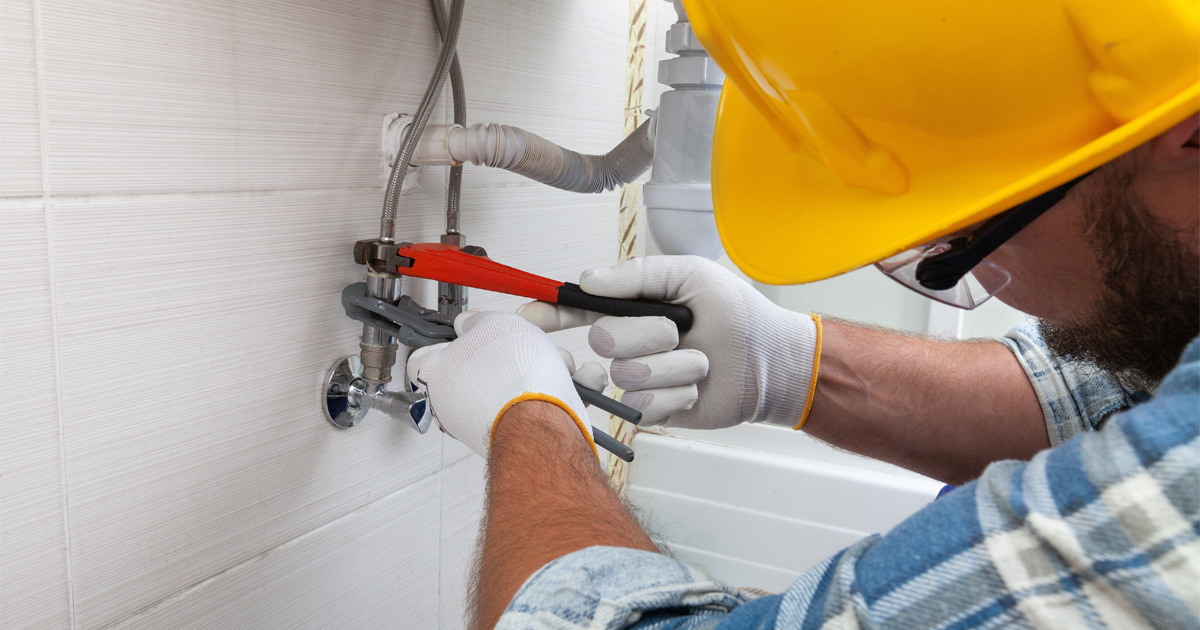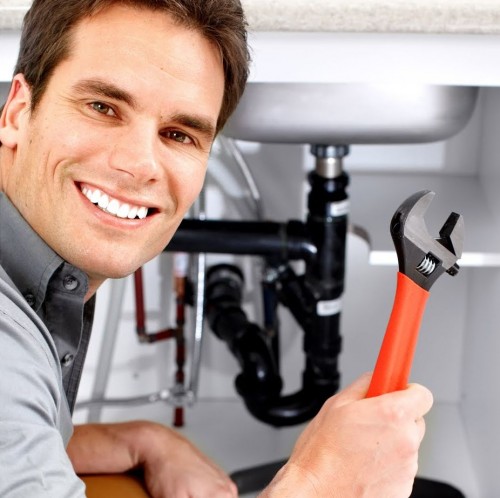Untangling the Basics of Home Plumbing: A Beginner's Manual
Untangling the Basics of Home Plumbing: A Beginner's Manual
Blog Article
We've stumbled on this great article involving Plumbing Basics For Every Home: The HomeTriangle Guide directly below on the web and reckoned it made good sense to relate it with you here.

Plumbing is an important aspect of any home, responsible for supplying clean water for drinking, food preparation, and showering, along with getting rid of wastewater securely. Recognizing the essentials of home plumbing is essential for every single home owner to ensure correct maintenance, troubleshooting, and, if required, repair work. In this novice's guide, we'll cover the fundamental principles of home plumbing to aid you come to be extra accustomed to just how it works.
Supply Of Water System
The supply of water system brings clean water into your home from a municipal water resource or a personal well. It consists of a main water line that attaches to your home's plumbing system, typically situated underground. A water meter determines the amount of water consumed, while a shut-off shutoff permits you to regulate the flow of water right into your home.
Plumbing Components
Plumbing fixtures are gadgets that supply water to various parts of your home and consist of sinks, taps, bathrooms, showers, bath tubs, and devices such as dish washers and cleaning makers. Each component is connected to the water system system through pipelines and installations and might have its shut-off valve for maintenance or emergencies.
Water Heating System
The water heater is in charge of heating water for domestic usage, consisting of showering, cooking, and cleansing. Typical types of water heaters consist of tank-type water heaters, tankless (on-demand) hot water heater, and heat pump water heaters. The water heater is attached to the water system and provides hot water to plumbing components as required.
Water drainage System
The drain system eliminates wastewater from your home and carries it away to a sewer treatment center or septic system. It includes a network of pipelines, installations, and fixtures that move wastewater from plumbing components to the main sewage system line or sewage-disposal tank. Correct drainage is important to protect against blockages, backups, and sewage leakages.
Ventilation System
The ventilation system helps keep proper air pressure and protect against sewer gases from entering your home. Air vent pipelines, also referred to as air vent stacks, prolong from plumbing components to the roofing system, permitting sewer gases to get away securely outside. Ventilation pipes likewise permit air to enter the water drainage system, helping with smooth wastewater circulation and protecting against suction or vacuum impacts.
Usual Plumbing Tools
Having the right tools accessible is important for performing fundamental plumbing fixings and maintenance jobs. Common plumbing tools consist of adjustable wrenches, pipe wrenches, pliers, pipe cutters, hacksaws, plungers, augers (or drainpipe serpents), and Teflon tape. Having these tools conveniently available can assist you deal with small plumbing concerns efficiently.
Basic Plumbing Repair Work
While some plumbing repair work may need expert aid, many typical concerns can be resolved with basic DIY methods. Learning how to deal with a dripping faucet, unblock a drain, change a bathroom flapper, or repair a leaking showerhead can save you money and time on plumbing fixings.
Conclusion
Understanding the basics of home plumbing is important for each home owner to keep a secure, practical, and effective plumbing system. By acquainting yourself with the water system, plumbing fixtures, drain system, ventilation system, usual plumbing tools, and standard repairs, you can confidently address minor plumbing problems and ensure your home's plumbing system operates efficiently.
Plumbing for Beginners: A Comprehensive Guide
If you’re a beginner when it comes to plumbing, don’t worry; you’re not alone. Plumbing may seem intimidating, but with the right knowledge and a little practice, you can handle many common plumbing issues on your own. In this comprehensive guide, we will demystify the world of plumbing for beginners, providing you with the basic knowledge and skills needed to tackle common plumbing problems and even take on some DIY plumbing projects.
The Importance of Basic Plumbing Knowledge for Beginners:
First and foremost, basic plumbing knowledge gives you a solid foundation. It helps you grasp the key concepts and terminology that are essential in this field. By learning the basics, you’ll be able to build upon that knowledge and tackle more complex plumbing tasks in the future.
Having a basic understanding of plumbing also enables you to handle common issues that may arise in your home. Picture this: a leaky faucet or a clogged drain. With some basic plumbing knowledge, you’ll have the confidence to troubleshoot and fix these problems on your own. It saves you from unnecessary expenses and the hassle of waiting for a professional to arrive.
As a beginner, learning the basics of plumbing empowers you to take care of your own home. It gives you a sense of independence and self-reliance. You’ll no longer have to rely solely on professionals for every small issue that pops up. Instead, you can handle many tasks yourself, saving time and money in the process.
Remember, everyone starts as a beginner. Embrace the learning process and take small steps to expand your plumbing knowledge. There are plenty of online resources, tutorials, and even local workshops that talk about plumbing for beginners.
Essential Tools for Plumbing for Beginners
As you start your plumbing journey, having the right tools in your toolbox is crucial. Let’s explore some of the must-have tools:
Adjustable Wrench:
This versatile tool is a staple in any plumber’s toolbox. It allows you to tighten or loosen nuts and bolts of various sizes. Make sure to have an adjustable wrench with a comfortable grip.
Pipe Wrench:
A pipe wrench is specifically designed for gripping and turning pipes. It has serrated jaws that provide a strong grip, making it easier to loosen or tighten threaded pipes and fittings.
Plunger:
The plunger is a simple yet effective tool for clearing clogged drains and toilets. It creates suction when you push and pull, helping to dislodge blockages. Keep a good-quality plunger handy for those unexpected clogs.
Pipe Cutter:
When it comes to cutting pipes, a pipe cutter is your go-to tool. It creates clean, precise cuts without damaging the pipe. Look for a pipe cutter that can handle the pipe sizes you’re working with.
Hacksaw:
A hacksaw is useful for cutting through pipes, screws, and other materials. It’s a versatile tool that can handle different cutting tasks. Remember to use a blade suitable for cutting metal.
Tape Measure:
Accurate measurements are crucial in plumbing. A tape measure allows you to measure pipe lengths, distances, and dimensions accurately. Opt for a sturdy tape measure that extends a good length.
Pliers:
Pliers come in handy for various tasks, such as gripping, bending, and cutting. Slip-joint pliers with adjustable jaws are great for gripping pipes, nuts, and bolts.

Do you really like more info about How Does the Plumbing Work in Your Home?? Post a remark directly below. We would be pleased to see your views about this blog. Hoping to see you back again before long. Sharing is caring. Helping people is fun. We enjoy reading our article about What to Know About Plumbing: Basics, Tips, and Insights.
Website Report this page